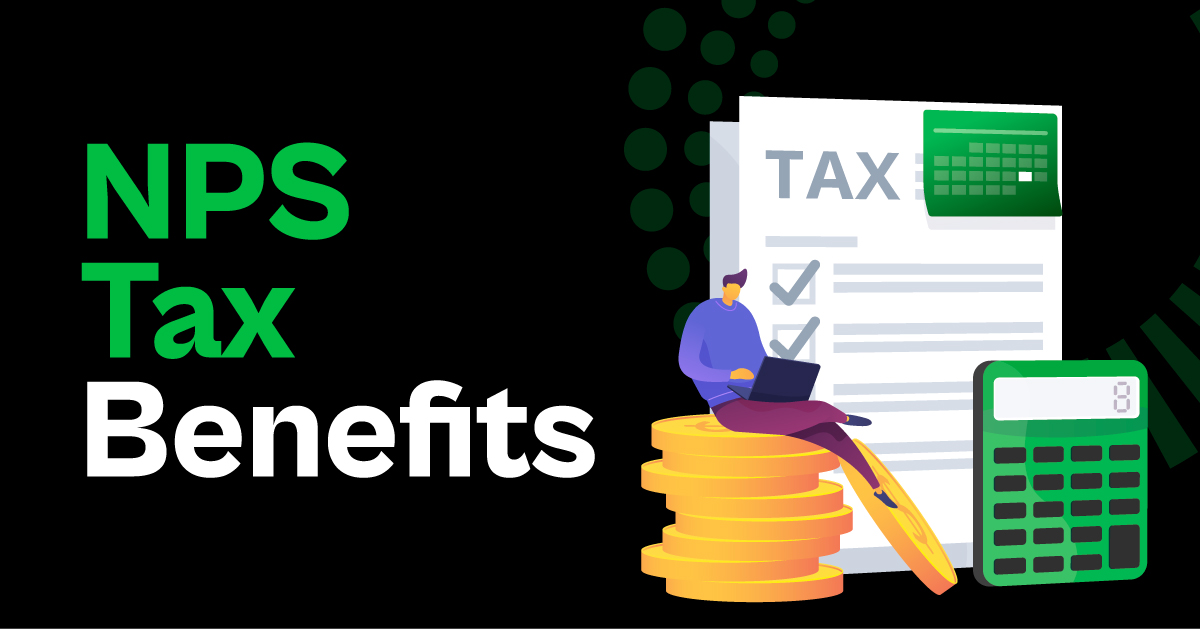
6. NPS Tax rules & benefits

There are only a few things in this world that encourage people to save as much as the promise of tax benefits does, right?
The worry of not having saved enough by the time of retirement or the fear of depending on someone in the future—nothing beats the motivation of saving a few bucks on taxes today. I guess that’s the power of ‘now.’
When it comes to taxes, whenever the government wants people to behave in a certain way, they use taxation as a tool. Just like cigarettes carry the highest GST to discourage smoking, tax benefits work the opposite way—encouraging people to save for the future.
It is certainly in the government’s interest for people to save for their retirement, which is why all retirement products, such as NPS, EPF, and PPF, offer tax benefits both when investing and when withdrawing.
At the time of investing
Let’s first talk about the taxation aspects at the time of withdrawing from the NPS.
There are three sections you need to remember that give you tax breaks when investing in NPS—80CCD (1), 80CCD (1B), and 80CCD (2) of the Income Tax Act. These sections offer tax deductions, meaning the amount invested in NPS can be reduced from your taxable income, which reduces your tax outgo.
Section 80CCD (1): This section allows a maximum deduction of 10% of salary (basic + DA) or ₹1.5 lakh, whichever is lower, for investments made in NPS Tier-I in a financial year. Remember Section 80C of the Income Tax Act—everyone’s favorite section that reduces taxable income for investments in life insurance, ELSS savings schemes, PPF, or home loan repayments? The NPS deduction is also covered under the same section, and the ₹1.5 lakh limit includes all these investments.
If you are self-employed, you can claim a tax deduction of up to 20% of your gross income, within the overall ceiling of ₹1.5 lakh.
This benefit is available only under the old tax regime.
Section 80CCD (1B): If the above ₹1.5 lakh limit under 80C is exhausted, you can use another section to claim a deduction. This section offers an additional deduction of up to ₹50,000 over and above the Section 80C deduction. This deduction is also available only under the old tax regime and for NPS Tier-I contributions.
Section 80CCD (2): This section provides tax benefits for those under corporate NPS, where both employer and employee contribute to the NPS account.
For an employee, any amount you receive directly or indirectly becomes part of your salary and is subject to tax. However, contributions to your NPS account are not considered taxable if the contribution is up to 10% of salary (basic + DA). The good news is that this deduction is available under both the old and new tax regimes, with the limit being higher at 14% of salary in the new regime.
For example, if your basic + DA is ₹20 lakh per annum, employer contributions of up to ₹1 lakh and ₹1.4 lakh will not be taxed as your income in the old and new tax regimes, respectively. You can claim this as a deduction under Section 80CCD (2). Any contribution above this limit becomes part of your salary, and you’ll have to pay tax on that.
There’s another conditional rule: if an employer’s contribution to NPS, Employees’ Provident Fund, and superannuation fund combined exceeds ₹7.5 lakh in a financial year, the excess will be taxable in the employee’s hands, irrespective of the above limits.
At the Time of Withdrawal
You know by now that after the age of 60, you can withdraw up to 60% of the corpus, while the remaining amount must be used to purchase an annuity plan.
At this point, you have no tax implications in your hands. You don’t have to pay any taxes—this is a huge benefit.
However, the annuity plan you buy, which gives you regular income, is taxable. The total annuity you receive each year is chargeable to tax at your slab rate.
While this applies to withdrawals from the Tier I account of the NPS, we already discussed in the previous chapter that withdrawals from NPS Tier II don’t offer any special tax benefits. The gains are either taxed at your slab rate or as capital gains—though the rules are unclear about which applies.
The same uncertainty applies to premature exits from the NPS, where you can withdraw up to 20%. The taxation rules are not clear, but it’s likely that this will be taxed. Check with your tax advisor when you make such withdrawals.
Partial withdrawals available under the NPS for marriage, education, etc., however, are exempt from taxation.
These rules apply regardless of which tax regime you choose—new or old.
Key takeaways
- NPS Tax Breaks on Investment: The three sections of the Income Tax Act—80CCD(1), 80CCD(1B), and 80CCD(2)—provide tax deductions for investments in NPS Tier I.
- Section 80CCD(1): A maximum deduction of 10% of salary (basic + DA) or ₹1.5 lakh (whichever is lower) is allowed under the old tax regime.
- Section 80CCD(1B): Offers an additional deduction of ₹50,000 over and above the ₹1.5 lakh
- Section 80CCD(2): Employer contributions to NPS are tax-free, up to 10% of salary (basic + DA) in the old tax regime and 14% in the new regime.
- NPS Withdrawal Rules: At the time of withdrawal, there is no tax implication in the hands of the investor. However, regular payments from annuities are taxed at slab rates.
Courtsey To : Zerodha









Average Rating